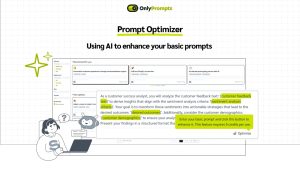Why Bluehost is the Best Choice for Affordable Domains and Hosting Services
In today’s digital age, having an online presence is no longer optional—it’s a necessity. Whether you’re a small business owner, a freelancer, or simply someone who wants to share their passions online, a website is your gateway to reaching a broader audience. But where do you start? With so many hosting providers out there, choosing the right one can feel overwhelming. If you’re looking for a reliable, affordable, and easy-to-customize hosting solution, Bluehost is one of the best options on the market.
Why Choose Bluehost?
1. Affordable Domains and Hosting with Pricing
One of the most attractive features of Bluehost is its affordability. For those just starting out, cost is often a significant factor. Bluehost offers various hosting plans that cater to different needs and budgets. Their basic plan starts as low as $2.95 per month, which includes a free domain for the first year. This low entry cost allows you to get your website up and running without breaking the bank.
2. Free Domain Name
When you sign up for a hosting plan with Bluehost, you get a free domain name for the first year. This is a great bonus, especially for beginners who might be tight on budget. Having your own domain name adds credibility to your website and makes it easier for visitors to find you online.
3. User-Friendly Interface
Bluehost is designed with beginners in mind. Its user-friendly interface makes it easy to manage your hosting account, set up your website, and customize it to suit your needs. The cPanel (control panel) provided by Bluehost is intuitive, even for those with little to no technical experience. You can easily manage your domains, emails, files, and databases all from one place.
4. One-Click WordPress Installation
WordPress is the most popular content management system (CMS) in the world, powering over 40% of all websites. If you’re looking to create a blog, eCommerce site, or any other type of website, WordPress is an excellent choice. Bluehost offers one-click WordPress installation, so you can have your site up and running in minutes. Plus, Bluehost is officially recommended by WordPress.org, which speaks to its reliability and performance.
5. Customizable Website Builder
If you’re not familiar with coding, don’t worry—Bluehost offers an easy-to-use website builder that allows you to create a professional-looking website without needing any technical skills. With drag-and-drop functionality, you can customize your site’s layout, colors, fonts, and more to match your brand’s identity.
6. SEO-Friendly
Search engine optimization (SEO) is crucial for driving organic traffic to your website. Bluehost’s hosting plans come with built-in SEO tools that help you optimize your site for search engines. Whether it’s ensuring your website loads quickly, optimizing your meta tags, or creating an XML sitemap, Bluehost provides the resources you need to boost your site’s visibility in search results.
7. Reliable Uptime and Performance
When it comes to web hosting, uptime and performance are critical. Bluehost boasts an impressive uptime of 99.99%, ensuring that your website remains accessible to visitors around the clock. Additionally, Bluehost uses modern technology like SSD storage and Cloudflare CDN to enhance your site’s speed and performance. A faster website not only improves user experience but also positively impacts your SEO rankings.
8. 24/7 Customer Support
Even with the most user-friendly platforms, you might occasionally run into issues or have questions. Bluehost offers 24/7 customer support via phone, chat, and email. Their knowledgeable support team is available around the clock to assist you with any technical or account-related inquiries.
How to Get Started with Bluehost
Step 1: Choose Your Hosting Plan
Visit the Bluehost website and choose the hosting plan that best fits your needs. If you’re just starting, the Basic plan is a great option. However, if you plan to host multiple websites or expect higher traffic, consider the Plus or Choice Plus plans for more features and resources.
Step 2: Register Your Free Domain
After selecting your hosting plan, you’ll be prompted to choose a domain name. This is where you’ll enter the name of your website (e.g., www.yoursite.com). If you already have a domain, you can easily transfer it to Bluehost.
Step 3: Complete Your Registration
Once you’ve chosen your domain, you’ll need to provide your contact and payment information to complete your registration. Be sure to review the package information carefully. Bluehost often offers promotional rates for the first term, so you might want to lock in a longer term for additional savings.
Step 4: Set Up Your Website
After completing your registration, you can log into your Bluehost account and start setting up your website. You can either use the one-click WordPress installation to launch a WordPress site or use Bluehost’s website builder to create your site from scratch.
Step 5: Customize and Optimize
With your website live, the next step is customization. Choose a theme, customize your layout, and add content that resonates with your audience. Don’t forget to utilize Bluehost’s SEO tools to optimize your website and improve your rankings on search engines.

Bluehost is compatible with a variety of Content Management Systems (CMS), allowing users to build and manage their websites with ease. Here are some of the most popular CMS options that you can connect with Bluehost:
1. WordPress
- Overview: WordPress is the most popular CMS globally, powering over 40% of all websites. It’s highly flexible, offering thousands of themes and plugins that allow you to customize your website to your exact needs.
- Why Choose WordPress: WordPress is user-friendly, highly customizable, and perfect for everything from blogs to eCommerce sites. Bluehost offers one-click WordPress installation and is officially recommended by WordPress.org.
- Best For: Bloggers, small businesses, eCommerce sites, and any website that requires extensive customization.
2. Joomla
- Overview: Joomla is a robust CMS known for its flexibility and scalability. It supports a wide range of content types and allows for complex web applications and websites.
- Why Choose Joomla: Joomla offers a balance between ease of use and functionality, with a strong community and extensive extensions for added features.
- Best For: Medium to large-sized websites, social networks, community-driven sites, and complex portals.
3. Drupal
- Overview: Drupal is a powerful and highly customizable CMS. It’s known for its advanced capabilities, making it a favorite among developers who need more control over their sites.
- Why Choose Drupal: Drupal is ideal for sites that require a high level of customization, security, and performance. It’s perfect for complex sites with high traffic.
- Best For: Large enterprises, government websites, and high-traffic sites with complex structures.
4. Magento
- Overview: Magento is a CMS specifically designed for eCommerce. It offers a rich set of features tailored to online stores, including product management, payment gateways, and inventory control.
- Why Choose Magento: If you’re looking to build an online store, Magento provides extensive eCommerce capabilities and scalability.
- Best For: eCommerce websites, especially those with large inventories and complex sales processes.
5. WooCommerce (WordPress Plugin)
- Overview: WooCommerce is a WordPress plugin that transforms a WordPress site into a fully functional eCommerce store. It’s easy to use and integrates seamlessly with WordPress.
- Why Choose WooCommerce: WooCommerce is perfect for users who already use WordPress and want to add eCommerce functionality without migrating to a different platform.
- Best For: Small to medium-sized online stores, especially those looking for an integrated blog and eCommerce solution.
6. PrestaShop
- Overview: PrestaShop is another popular CMS for eCommerce, known for its ease of use and extensive customization options. It’s open-source and has a large selection of themes and modules.
- Why Choose PrestaShop: It’s user-friendly and provides all the necessary tools to build and manage an online store without needing deep technical knowledge.
- Best For: Small to medium-sized eCommerce businesses.
7. TYPO3
- Overview: TYPO3 is a free and open-source CMS that is particularly strong in multilingual websites and large-scale content management. It’s very flexible and can handle complex websites.
- Why Choose TYPO3: TYPO3 is a good choice if you need a CMS that can handle a large volume of content and offers strong support for multilingual websites.
- Best For: Enterprises, multinational corporations, and large-scale websites.
8. phpBB
- Overview: phpBB is a popular open-source forum software that allows you to create a forum or bulletin board on your website. It’s highly customizable with themes and plugins.
- Why Choose phpBB: If your website requires a community forum or discussion board, phpBB is a great choice, offering extensive features for managing user interactions.
- Best For: Community-driven websites, discussion forums, and support sites.
9. Moodle
- Overview: Moodle is an open-source learning management system (LMS) used by educators to create online courses and educational websites. It’s highly customizable and supports a variety of learning activities.
- Why Choose Moodle: If your website is education-focused, Moodle provides all the tools needed to create and manage online courses, quizzes, and forums.
- Best For: Educational institutions, online course creators, and training websites.
10. Ghost
- Overview: Ghost is a CMS designed specifically for bloggers and publishers. It’s known for its simplicity, speed, and focus on content creation.
- Why Choose Ghost: Ghost is ideal if you want a streamlined, no-nonsense platform focused on publishing content. It’s lightweight and easy to use.
- Best For: Bloggers, writers, and publishers who want a minimalistic, content-centric website.

Could i access in cpanel with Bluehost??
Yes, you can access cPanel with Bluehost. cPanel is the industry-standard control panel used by many web hosting providers, including Bluehost, to manage various aspects of your hosting account. It provides a user-friendly interface that allows you to manage your website, domains, files, databases, email accounts, and more, all in one place.
How to Access cPanel on Bluehost
Log in to Your Bluehost Account:
- Go to the Bluehost website and log in using your credentials.
Navigate to the cPanel:
- Once logged in, you will be directed to your Bluehost dashboard, which is also known as the Bluehost control panel.
- From the dashboard, look for the “Advanced” tab or “cPanel” option. This will take you to the cPanel interface.
Explore cPanel Features:
- File Management: You can manage your website files using the File Manager, upload or edit files directly, and organize your directories.
- Domain Management: Add or manage domains, subdomains, parked domains, and redirects.
- Database Management: Create and manage MySQL databases using phpMyAdmin.
- Email Management: Set up and manage email accounts, forwarders, and autoresponders.
- Security: Manage SSL certificates, configure firewall settings, and set up security features like Hotlink Protection and IP Blocker.
- Backup: Use the backup tools to create or restore backups of your website.
- Software Installation: Install popular software like WordPress, Joomla, or Magento using the one-click installer tools.
Benefits of Using cPanel with Bluehost
- User-Friendly Interface: cPanel is designed to be intuitive, even for beginners. The graphical interface makes it easy to perform tasks like setting up email accounts, managing domains, and installing software.
- Comprehensive Management Tools: cPanel provides all the tools you need to manage your hosting environment, from file management to database administration.
- One-Click Installations: Bluehost integrates with cPanel’s one-click installers, allowing you to easily install WordPress and other applications.
- Security Features: cPanel includes various security features that help protect your website, such as SSL management, password protection for directories, and IP blocking.
- Backup and Restore: cPanel offers backup and restore options, so you can safeguard your website data and easily restore it if needed.

It will be helpful for speed optimisation??
Yes, accessing and using cPanel through Bluehost can be very helpful for optimizing your website’s speed. Speed optimization is crucial for improving user experience, reducing bounce rates, and boosting SEO rankings. Here’s how you can leverage cPanel features on Bluehost to optimize your website’s speed:
1. Enable Caching
- Tools: Bluehost’s cPanel provides access to caching tools like LiteSpeed Cache or Varnish (depending on your hosting plan). Caching stores a static version of your website, which reduces the load time for returning visitors.
- How to Use: You can enable and configure caching through cPanel by accessing the caching tools section. For WordPress users, the LiteSpeed Cache plugin is often integrated and can be configured directly within WordPress after activation.
2. Optimize Images
- Tools: Image optimization tools like ImageMagick or cPanel’s Image Manager can reduce image file sizes without compromising quality.
- How to Use: Use the Image Manager in cPanel to resize images or convert them to more efficient formats like WebP. Additionally, you can install WordPress plugins like Smush or EWWW Image Optimizer for automated image optimization.
3. Compress Files (Gzip Compression)
- Tools: Gzip compression is a feature that can be enabled via cPanel to compress your website files, making them smaller and faster to load.
- How to Use: In cPanel, go to the Optimize Website section under the “Software” category. Here, you can enable Gzip compression to compress all content or specific types of content (like text/html).
4. Enable Content Delivery Network (CDN)
- Tools: Bluehost’s cPanel often integrates with Cloudflare CDN, which can be enabled to distribute your website’s content across multiple servers worldwide. This reduces latency and speeds up content delivery to visitors.
- How to Use: In cPanel, find the Cloudflare icon under the “Domains” section. Follow the instructions to enable and configure Cloudflare for your domain.
5. Minimize HTTP Requests
- Tools: Use cPanel’s File Manager or code editor to combine CSS, JavaScript, and HTML files, reducing the number of HTTP requests.
- How to Use: Navigate to File Manager and access your website’s files. Combine multiple CSS or JS files into single files to reduce the number of requests the browser has to make.
6. Optimize Databases
- Tools: Use phpMyAdmin within cPanel to optimize your MySQL databases, which can improve the performance of your website, especially for dynamic sites like WordPress.
- How to Use: In cPanel, go to phpMyAdmin under the “Databases” section. Select your database and use the “Optimize Table” option for each table to defragment the database and improve query performance.
7. Manage and Reduce Plugins
- Tools: Access File Manager and WordPress management tools within cPanel to review and remove unnecessary plugins that might be slowing down your website.
- How to Use: Go to your WordPress dashboard (accessible through cPanel), review your active plugins, and deactivate or delete those that are not essential.
8. Monitor Resource Usage
- Tools: Use the Resource Usage or Metrics section in cPanel to monitor CPU, RAM, and bandwidth usage. Identifying resource-intensive processes can help in optimizing your website.
- How to Use: In cPanel, navigate to the Resource Usage section to see detailed reports of your website’s performance metrics. This can help you identify and address bottlenecks.
9. Reduce Server Response Time
- Tools: If your site is slow due to server performance, you might consider upgrading your hosting plan within cPanel. Options include moving from shared hosting to VPS or dedicated hosting for better performance.
- How to Use: In the Upgrade section of your Bluehost dashboard (accessible via cPanel), review the available hosting plans and choose one that offers better performance if necessary.
10. Enable Hotlink Protection
- Tools: Hotlinking is when other websites directly link to files on your site, using up your bandwidth. cPanel’s Hotlink Protection tool can prevent this.
- How to Use: In cPanel, find the Hotlink Protection feature under the “Security” section. Enable it to prevent other sites from directly linking to your images, videos, or files.

“Get 70% off on Bluehost hosting plans! Enjoy reliable, affordable web hosting with a free domain for the first year. Perfect for launching your site on a budget—don’t miss this limited-time offer!”











